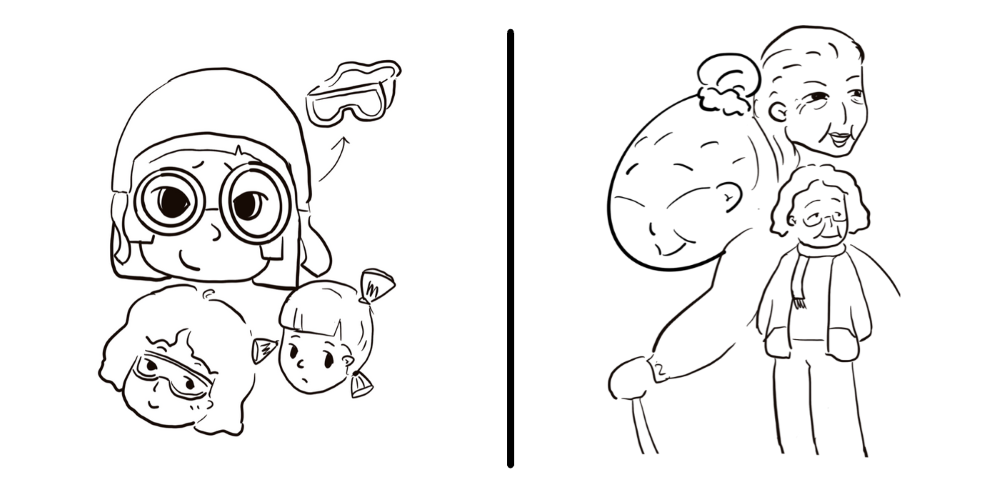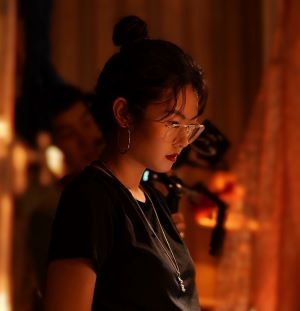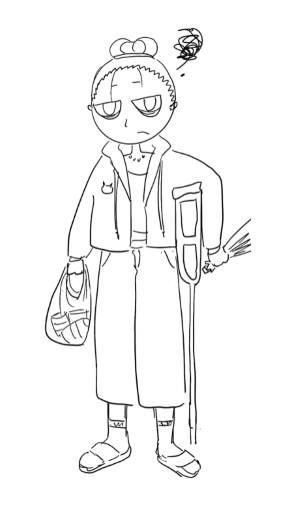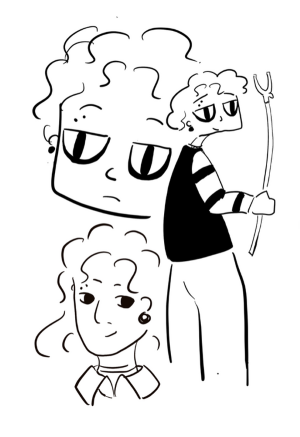Animation Conversations: Directing Student Roku Jingwen Long


Animation Conversations is an interview series with Film faculty, students, and alumni where we discuss working as screenwriters, directors, and producers in the animation industry.
This week, we sat down with Directing student Roku Jingwen Long to talk about Still, her feature-length animated screenplay. Long wrote the script in Screenwriting III-IV, a year-long two-course series that Screenwriting and Directing students in the Film Program take in their second year.
Roku Jingwen Long is a Columbia Film MFA Candidate and a bilingual film director and writer. She also holds a BFA in Film and Theater Directing from the Communication University of China. Her previous short films Secretly and First Love received awards from three prestigious film festivals in China. Her feature script, Party House of Cancer, was also nominated in the major screenplay festival in China. She worked in TV writing and advertisement directing before attending Columbia University, which has given her experience in on-set production and developing stories. Roku was born in Beijing and grew up in an international neighborhood in the heart of the city. She spent her childhood around the theaters with her parents. She loves animation and games, which gives her an open eye to embrace different forms of narrative. She is now based in New York where she relishes exploring them all.

Tell us a bit about yourself. What made you come to Columbia?
Roku Jingwen Long [RJL]: I really enjoy the diversity of New York City. Also, I grew up in Beijing and studied there as well, I always wanted to travel and study in a different city, to immerse myself in a different culture, meet different people—everything that comes with travelling around the world. I had never been to New York before, but upon arriving here, I was really intrigued by the city. It didn’t take me long to adjust to living here because I find Beijing and New York similar to each other.
What do you enjoy most about directing?
RJL: When I write, I always imagine the visuals in my head. The reason why I love directing is because I can make the picture—the vision—in my head true. I was a photographer before studying filmmaking at Columbia, and that really gave me a strong visual sensibility that helps to inform my directing. I also think one of my strengths as a director is that I observe people with subtlety. You can take this specific point of view to explore things people might ignore in their everyday lives. There are so many stories in this world that haven’t been told, and I believe that I have a responsibility to tell these kinds of stories.
During your second year, you wrote an animated feature. What is that project about?
RJL: It’s a hard story to describe [Laughs]. It is about a laundromat that doubles as a body-lending business to ghosts who have unfinished business. In the world of the story, if people have regrets or unfulfilled wishes when they die, their spirit remains in the exact spot where they passed away. They can’t move or travel. If these ghosts want to finally leave the Earth and find peace, they have to confront their regrets, or fulfill their dreams. But to do that, they have to borrow a body. That’s where the laundromat comes in. They help the ghosts finally find peace.
The protagonist of the story is a young girl named Saki. Her grandmother, Kiko, secretly works for this laundromat, helping the ghosts of New York by lending her body to them. One day, something goes wrong and Kiko goes missing. With Kiko in danger, Saki must team up with Chloe, the owner of the laundromat, to find her grandmother before it’s too late.
Wow! That sounds so amazing. Where did the inspiration for this story come from?
RJL: Part of it came from the vibe of New York City. People are all so different here, and I really wanted to show that diversity in the script through characters who are from different places, speak different languages, but all live in the same city. The idea for ghosts being trapped in the place where they passed away actually came from a dream I had where I was dying and my own spirit could not move. It made me wonder, what if peoples’ spirits stayed behind exactly where they passed away? If there is a car accident, and someone dies, their spirit remains in the street forever, but no one can see them. It seemed like a great source for conflict for a story.
The third reason I wanted to explore this story is very personal. Like Saki in the story, I am also afraid of my grandmother passing away. I cannot imagine it. I’m studying abroad, and it’s difficult to travel back home. Writing this script allowed me to go through the story with Saki, who loses her grandmother by the end, and feel what she feels as she must go on and build her own life. Also, during the pandemic, I feel like everyone is so afraid of losing their loved ones, and so many people have died as a result of COVID-19. I wanted to build a world where even though people pass away and they leave this world, they are able to leave without any regret or unfilled wishes. And if they do, Chloe and her laundromat business are there to help them realize their dreams and find peace. I hope the audience, after reading the script, feels a healing energy—that they feel safer and less afraid of losing someone in their own life.

That is so beautiful. Did you always imagine the story as animated?
RJL: During the pandemic, I started to think a lot about the industry of filmmaking and storytelling. I feel like a great story works in every narrative form, whether it’s live-action film, or animation, or even in a video game. It doesn’t have a limitation for me. One of the reasons I was more inclined to animation with this story is because during the pandemic, especially early on, live-action film production was so difficult and you couldn’t really do much. There seemed to me more opportunities to explore animation during this time.
Also, animation opened up the possibilities for creating the world of this story since it is magical and fantastical. I mean, in the script, we separate people’s spirits from their bodies in a washing machine! [Laughs] Doing something like that in live-action would require such a big budget for VFX. I’ve always wanted to write an animated feature, and this is the first time I’ve actually written one. It just seemed like the right moment to do it. I wanted to work on a project that was less dramatic, that would give the world more color and joy. Every time I return to working on this script, I feel so excited. Building a story from your imagination and passion—your observations of the world around you...you can make a dream-like world come to life. It’s an amazing feeling when you’re writing it.
You also drew character illustrations as you wrote the script. How does that inform or complement your writing process?
RJL: I have a bit of a background in drawing from when I studied sketching at a young age. I love doodling and sketching. I feel like it helps me create characters as I write. Whether you’re writing or drawing, it’s the same thing—you’re describing the thing you see in your head. You describe it in words or images. Sketching allows me to explore the character in a different way and explore things I don’t necessarily write into the script. Sketching things out has also been really helpful for figuring out how this fantastical world works. Sometimes it’s easier to show people a drawing than to explain it.
What plans do you have for the project?
RJL: I’m planning to make a short animated film taken from the world of my feature script. I want to keep the world setting, because it is the core of the story. However, I may change the main characters or take on a different point of view. For example, there is a secondary character in the feature named Noah who is a ghost who works at the magical laundromat, and I might explore his character more in the short—how he came to the laundromat, his history. I’m in development on the short and looking for collaborators. I really hope I can make a short animated sketch for this project to convey the world, atmosphere, and visual language of the world.
Writing this animated project made me realize that people often set limitations for themselves when creating things. But I’ve always been told by my professors here at Columbia to try something I’ve never done before. This was my first time writing animation, and I feel really great about it. It makes me feel like I can do anything. I want to continue to explore animation and try new things. Even three years ago, I wouldn’t have thought I could write an animated project. And here I am.
Do you have a favorite animated work that’s been an important touchstone for you?
RJL: That’s a great question. One is Perfect Blue. It’s a thriller directed by Satoshi Kon. That movie made me realize that animation can be used for truly great storytelling. It does not have to be just for kids. I love a lot of Pixar films. Inside Out. Also Spirited Away. I really love animated projects that explore different styles or are more experimental. Animation can also be more precise sometimes than live-action. It’s amazing.